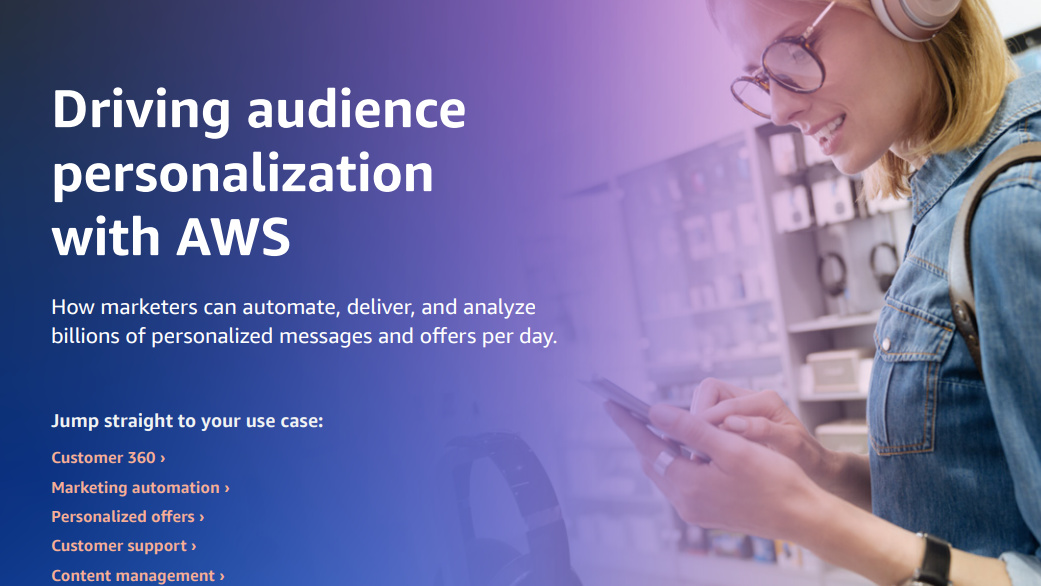What is the social, mobile, analytics and cloud (SMAC) framework?
Customers live in a world that’s both social and mobile – so it’s important to reach them where they are

Social, mobile, analytics and cloud (SMAC) is a powerful way of thinking about how you do business, but it’s focused more on processes and platforms than solutions. You still need to identify your needs and goals within a SMAC framework.
This feeds into the larger topic of digital transformation – another buzz phrase that basically means updating your business model for the digital age. You might think you crossed that bridge many years ago, but SMAC reflects a sea-change that many haven’t yet caught up with. It’s even been described as the successor to the web, because it represents the new ways that customers interact with online services – ones that are multidimensional and reciprocal, in a way that the original web experience never was.
In other words, SMAC might not lead you directly to your goals, but it can light the way. Think of its elements not as merely a checklist, but as the pillars of your next digital transformation. We explore what SMAC is, how it’s applied, and why it might be worth exploring in today’s age.
SMAC is another of those marketing buzzwords, right?
Yes – but it’s more than that. Standing for social, mobile, analytics and cloud, it certainly does tick the boxes for a LinkedIn search term. Before consigning the phrase to the buzzword bin, though, it’s worth taking a moment to consider what it encapsulates. The combination of these terms constitutes a broad manifesto for interacting with your users and collecting data that can drive smarter business decisions.
How will this faddish ideology keep my business going?
Let’s be clear: SMAC is not a detailed game plan. It’s a helpful mnemonic for a multi-pronged approach that can help you reach your customers effectively. At a minimum, the social aspect means having a presence on social media, so your customers can talk to you, and you can, in turn, learn about their interests and activities.
Mobile means recognising that they might want to interact with you via a smartphone or even a wearable, which again gives you an opportunity to collect valuable insights.
Do we really need to be reminded that people use social media and smartphones?
RELATED RESOURCE

Modernise the workforce experience
Actionable insights and an optimised experience for both IT and end users
FREE DOWNLOAD
It’s true, the fact that “social” and “mobile” are mentioned explicitly (and separately) does rather date the acronym. People first started talking about SMAC back in the days when social engagement was an exciting new currency, and a custom app was a necessity – not merely for the sake of brand cachet, but because the mobile browser wasn’t able to reproduce the desktop PC experience.
Sign up today and you will receive a free copy of our Future Focus 2025 report - the leading guidance on AI, cybersecurity and other IT challenges as per 700+ senior executives
Now the situation is almost reversed, and social and mobile activity is so ubiquitous it’s easy to overlook. But it’s crucial to keep abreast of how these spaces are expanding and evolving, as they continue to throw up huge new opportunities to sell, communicate and learn more about your customer.
Do we really need new technologies for analytics?
Big data analytics doesn’t have to mean multi-sheet Excel workbooks or expensive online dashboards. My late cousin used to make parts for submarines, and his analytical process fitted on a beer mat.
The important thing is to learn from the data you collect. That often means letting the information speak for itself – start by looking for the peaks and troughs on the graph, as it were, rather than diving in with filters and queries. This can require a “big data” mindset, which calls for modern tools and methods.
Why does the cloud always need to be involved in everything?
The cloud part of SMAC may seem a bit bolted on, as it doesn’t directly shape your relationship with customers. But building your business on a public cloud platform such as Amazon Web Services (AWS) or Microsoft Azure allows you to quickly scale, iterate, segment and customise your offering to suit the demands and opportunities that are revealed by your social, media and analytics activity.
In fact, for most businesses, that sort of flexibility is worth having even if you largely ignore the other three ingredients – which answers your initial question.
Is SMAC too vague to be actionable?
The looseness of SMAC as a concept is part of what makes it useful – its principles can apply to almost any business. And thinking about its four parts together can help point you towards joined-up solutions, such as launching a social media campaign to encourage a certain demographic to install your app. Since the four initials are handily encompassed in one PowerPoint slide, it’s also an easy way to break down activities and costs into silos, and decide where next to focus your attention.
-
 Trump's AI executive order could leave US in a 'regulatory vacuum'
Trump's AI executive order could leave US in a 'regulatory vacuum'News Citing a "patchwork of 50 different regulatory regimes" and "ideological bias", President Trump wants rules to be set at a federal level
-
 TPUs: Google's home advantage
TPUs: Google's home advantageITPro Podcast How does TPU v7 stack up against Nvidia's latest chips – and can Google scale AI using only its own supply?
-
 SAS leans on synthetic data and digital twins to support business data demand
SAS leans on synthetic data and digital twins to support business data demandNews SAS has announced new synthetic data capabilities and support for digital twins in a bid to equip enterprises with concrete platforms for data-driven decision making.
-
 Alteryx unveils double leadership appointment in fresh growth drive
Alteryx unveils double leadership appointment in fresh growth driveNews Alteryx has announced the appointments of Jon Pexton as chief financial officer and Steven Birdsall as chief revenue officer.
-
 Three-quarters of data analysts are still reliant on spreadsheets and manual preparation – but AI tools are now transforming the profession, boosting productivity, and supercharging efficiency
Three-quarters of data analysts are still reliant on spreadsheets and manual preparation – but AI tools are now transforming the profession, boosting productivity, and supercharging efficiencyNews Data analysts are still largely reliant on spreadsheets and manual preparation techniques, but AI and automation are shaking things up.
-
 More than a number: Your risk score explained
More than a number: Your risk score explainedWhitepaper Understanding risk score calculations
-
 Automate personalization with AWS
Automate personalization with AWSWhitepaper How marketers can automate, deliver, and analyze billions of personalized messages and offers per day
-
 How LaLiga championed big data to transform data analytics in sport
How LaLiga championed big data to transform data analytics in sportCase Study Spain’s premier football division is hoping to transform not just football but sport as a whole with its data analytics efforts
-
 Three ways manual coding is killing your business productivity
Three ways manual coding is killing your business productivityWhitepaper ...and how you can fix it
-
 Oracle adds new capabilities to Smart Construction Platform
Oracle adds new capabilities to Smart Construction PlatformNews New analytics enable continuous improvement across project planning, construction, and asset operation